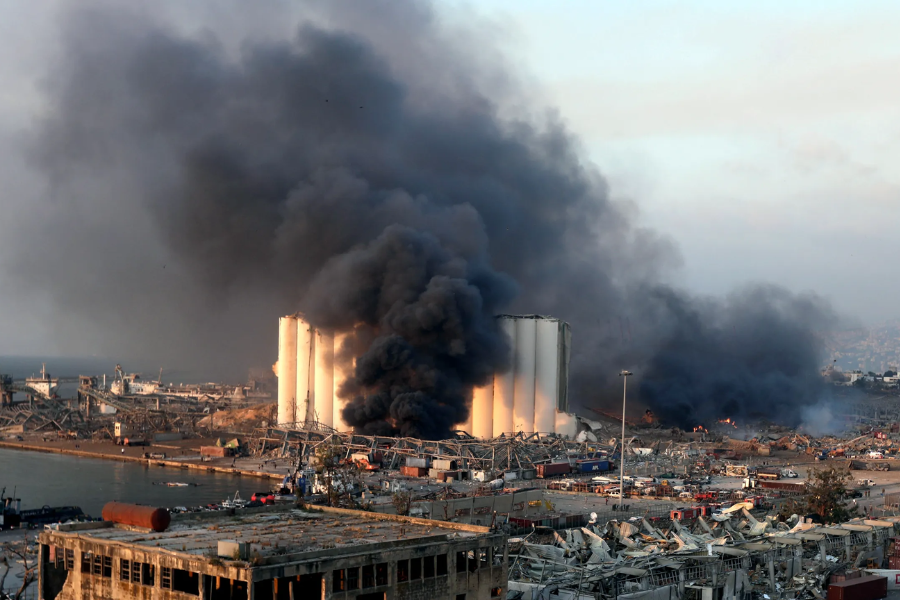Understanding the Causes, Effects, and Prevention of Explosion LH3
Explosions are one of the universe’s most devastating forces, whether they are generated by humans or by nature. Although there are many distinct types of explosions, scientists, engineers, and safety advocates are concerned about one known as “Explosion LH3.” Even if the acronym seems like something from a science fiction novel, understanding Explosion LH3 is crucial to enhancing safety protocols and preventing disasters. This page explores the causes, consequences, and preventative measures of explosion LH3.
Explosion LH3: What is it?

A powerful Explosion LH3 is an explosive event that can happen under specific physical and chemical conditions. This event, which is often triggered by reactive or volatile compounds, is characterised by the rapid release of energy. The fundamental idea behind Explosion LH3 is that some chemicals are unstable and release a lot of energy when disturbed, albeit the exact details aren’t always evident. Because these Explosions occur so frequently in industrial settings, businesses and safety professionals need to be aware of the risks they bring.
The Structure and Chemical Make-Up of Explosion LH3
The explosive qualities of Explosion LH3 are influenced by several chemical configurations. Compounds having volatile chemical structures can dissolve in response to subtle stimuli, releasing energy in the form of an explosion. For instance, an exothermic reaction may be initiated when LH3 is coupled to compounds that are extremely reactive when oxidised. These reactions are powerful and spontaneous, and can result in violent explosions. Understanding these chemical properties is crucial for industries working with fragile materials.
Typical Environments and Industries LH3 Explosion Proneness
Explosion LH3 are particularly relevant to industries that deal with chemicals, such as mining, petrochemicals, and pharmaceuticals. Numerous materials present in these environments have the potential to detonate in specific situations. For instance, the risk is higher in refineries that handle volatile chemicals or chemical plants that handle flammable substances. Finding vulnerable locations enables the creation of targeted safety precautions to stop such catastrophic events.
Triggering Conditions: A Scientific Study
Examining the elements that contribute to instability is essential to figuring out what triggers an LH3 explosion. Explosions can be caused by a variety of factors, including changes in temperature and pressure, interaction with other reactive substances, and more. For instance, when subjected to a sudden increase in temperature, certain chemicals can become immediately unstable, causing energy to be released. The identification and management of these trigger events is the main focus of industry efforts to lower the frequency of LH3 occurrences.
Possible Effects of an Explosion LH3
In the case of an Explosion LH3, infrastructure, human life, and the environment are all at danger. The most devastating outcome is often human injuries, such as burns and other severe physical traumas. Large-scale property destruction from explosions may need costly repairs or perhaps the closure of the impacted organisation. The ecosystem is also severely harmed by the blasts. Toxic chemicals released into the air and water have the potential to damage ecosystems, taint resources, and harm animals.
Examples of Real-World LH3 Explosion Incidents
There have been several Explosion LH3 in the past that were thought to have been caused by reactive substances like LH3. For example, explosions in some chemical plants have been seen, which are consistent with LH3-like occurrences, in which volatile compounds exhibit unanticipated reactions. In order to create safer handling and containment techniques, scientists and engineers can gain a better understanding of the nature of these occurrences by studying these real-world cases.
Why Safety Depends on Knowing About Explosion LH3
Understanding the causes and consequences of Explosion LH3 is the basis of safety regulations in high-risk industries. To prevent explosions like this one, it is crucial to handle volatile compounds carefully. By doing this, resources and lives can be saved. By giving LH3-related safety measures a priority, businesses can reduce risks, prevent mishaps, and improve workplace and community safety.
Recent Developments in Explosion Detection Technology
Identification of potential explosive dangers has advanced significantly in recent years. The industry now has the tools to identify temperature or pressure variations that point to instability thanks to the development of sophisticated sensors and real-time monitoring systems. Implementing preventative measures requires early detection of circumstances that might result in an LH3 explosion. For this, technologies like gas detectors and infrared sensors are crucial.
Safety Training’s Contribution to LH3 Explosion Prevention
Human error is one of the primary causes of industrial accidents, including Explosion LH3. To increase awareness and teach safe handling practices for hazardous chemicals, employee safety training is essential. Training programs include risk identification, appropriate item storage, and emergency response. Regularly updated training programs ensure that employees are constantly aware of the latest safety precautions.
Government Rules and Requirements for Compliance
Certain government agencies have established certain rules for the handling of hazardous materials in an attempt to lessen the possibility of explosions involving them. Everyone’s safety depends on observing these rules, which are also mandated by law. Organisations like the EPA and OSHA have established particular laws for the handling, storage, and disposal of volatile chemicals. Strict adherence to these regulations is necessary to prevent Explosion LH3 and lessen their impact.
Typical Myths Regarding Explosion LH3
The numerous misconceptions surrounding explosives like LH3 can lead to misunderstandings in industrial settings. Contrary to common belief, these explosions are typically caused by recognisable variables. The idea that reactive substances are only harmful in large amounts is another widespread misconception. In actuality, even little doses can be quite harmful if handled improperly.
Emergency Response Plans Are Essential
Having a plan in place for handling accidents is crucial since they can still occur despite safeguards being taken. Techniques for evacuation and communication in the case of an LH3 explosion are part of these preparations. By making sure that employees and first responders are prepared to deal with the aftermath, an effective emergency response may reduce the number of fatalities and property damage.
Strategies to Lower the Risk of Explosion LH3
To stop Explosion LH3, proper storage practices, regular equipment inspections, and adherence to safety rules are all required. Reactive chemicals should be stored in stable, temperature-controlled environments to reduce the likelihood of explosions. Maintaining equipment in excellent repair and regularly checking for wear and leaks can also help prevent introducing unstable compounds to reactive situations.
Creating Industrial Settings That Are Safer
To create safer environments, explosive dangers should be taken into account while designing industrial locations. This includes installing blast barriers, placing equipment strategically, and having enough ventilation. A well-designed industrial facility aims to prevent accidental explosions that might harm workers and infrastructure. Precautions like this during the design phase demonstrate the value of proactive safety management.
Future Developments in Technology for Explosion Prevention
Better protections in the future are indicated by recent advancements in explosion prevention. Researchers are developing less reactive materials and gadgets with built-in safety features. Furthermore, integrating AI into monitoring systems holds promise as it can analyse data trends to predict and prevent explosions. These technologies are essential for industries that value innovation and security.
Conclusion: Putting Safety First to Reduce the Risk of Explosion LH3
Comprehending Explosion For companies handling reactive chemicals, LH3 is crucial. Businesses may safeguard their resources, workforce, and local communities by being knowledgeable about the causes, effects, and preventative strategies. Putting safety first is not only required by law, but it is also morally right. Everyone can have a safer future by preventing Explosion LH3 by education, training, and adherence to best practices.
FAQ
Which sectors are most vulnerable to Explosion LH3?
Because they deal with volatile materials, industries including mining, petrochemicals, and pharmaceuticals are especially vulnerable to Explosion LH3.
Is it possible to completely prevent Explosion LH3?
Explosion LH3 cannot be completely prevented, although they can be considerably decreased with appropriate handling, storage, and monitoring procedures.
What is Explosion LH3′ primary cause?
The primary cause is the instability of some chemical substances, which, in certain situations, can react explosively.
Are methods for early detection of Explosion LH3 available?
Indeed, technology such as gas detectors and infrared sensors aid in detecting the circumstances that might result in an LH3 explosion.
How can Explosion LH3 be avoided with training?
Employees that get training are better prepared to handle reactive materials safely, which lowers the possibility of human error-related mishaps.
Keep an eye for more news & updates on Your Buzz!






